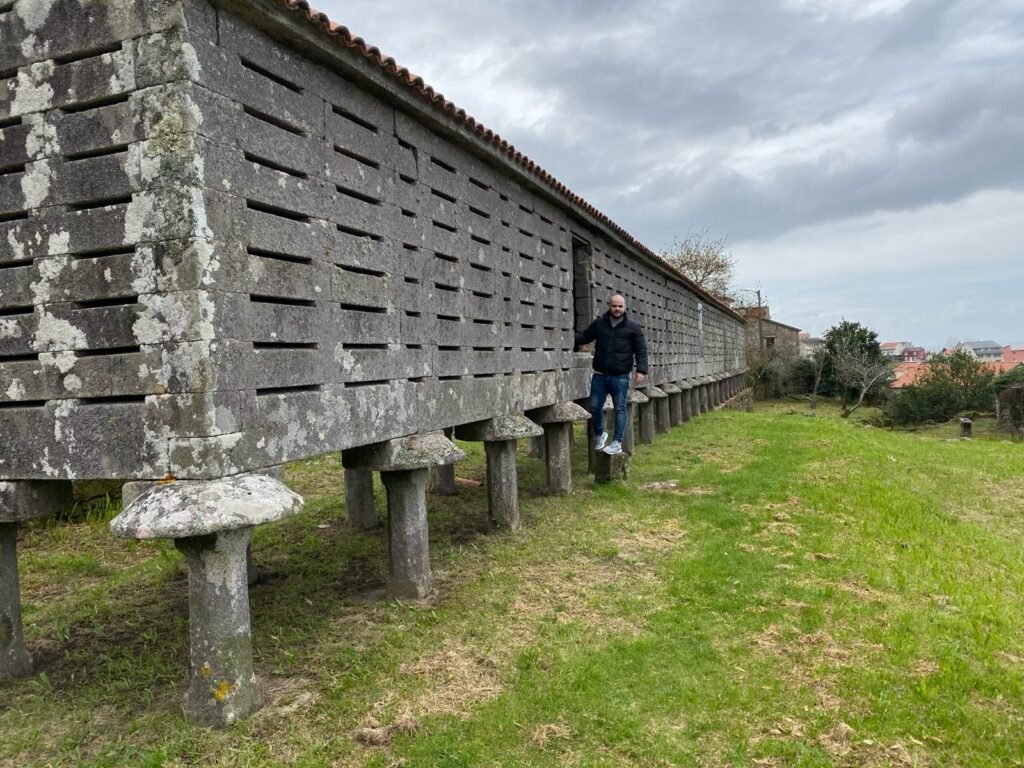Exploring the “Hórreo”: A Traditional Barn for Storing Cereals
In the picturesque regions of Galicia, Spain, there exists a centuries-old agricultural structure that has become a symbol of rural heritage: the Hórreo. This traditional barn, designed specifically for storing cereals, is an essential part of the region’s cultural and agricultural history. With a unique design that dates back to the 13th century, the Hórreo is not only an iconic building but also a clever solution to the age-old problem of preserving grain and protecting it from pests.

What is a Hórreo?
The Hórreo is a type of granary, a storage structure used for keeping harvested cereals, such as corn, wheat, and barley, safe and dry. Characterized by its elevated platform on poles or stone supports, the Hórreo was built with one primary purpose: to protect the stored grain from rodents, dampness, and other environmental factors. By raising the structure off the ground, the stored cereals are kept safe from pests and remain well-ventilated, ensuring they stay fresh throughout the winter months.
Design and Construction
Hórreos are typically made from stone or wood, and their design varies depending on the region and the materials available. The most common shapes are rectangular and square, with some designs featuring intricate carvings or ornate decorations. The elevated platform is supported by wooden or stone pillars, which allows air to circulate beneath the structure. This circulation helps to prevent the build-up of moisture, which could otherwise spoil the grain.
The design of the Hórreo also includes a sloping roof, which helps to protect the grain from rain and ensures that the stored cereals remain dry. The enclosed nature of the barn keeps the grain secure, while the open sides allow for proper ventilation, making it an effective and efficient solution for grain storage.
A Tradition Across Borders
While the Hórreo is most closely associated with Galicia, it is not unique to Spain. Similar structures can be found in other parts of Europe, including France, the British Isles, and Scandinavia. These regional variations of the granary share similar principles of design and function, with each version adapted to the local climate and agricultural needs.
In some parts of France, for instance, the structure is known as a “grange,” while in the British Isles, similar granaries are often referred to as “corn cribs.” Regardless of the name or location, these elevated granaries have served a common purpose: ensuring the preservation of harvested grains and protecting them from pests and damp conditions.

Historical Significance
The origins of the Hórreo can be traced back to medieval times, with historical documents indicating that these structures date back to the 13th century. Over the centuries, the design and construction of Hórreos have remained largely unchanged, a testament to the practicality and effectiveness of their design. These barns have not only played a crucial role in preserving grains but also in shaping the agricultural landscape of the regions where they are found.
In Galicia, the Hórreo became a symbol of self-sufficiency and resilience, reflecting the region’s reliance on traditional farming methods. Even today, many Galician families continue to use Hórreos for storing their harvests, maintaining the cultural heritage of the region.
Conclusion: A Lasting Tradition
The Hórreo is more than just a practical storage solution; it is a part of the cultural identity and agricultural heritage of Galicia and other regions in Europe. With its distinctive design, raised platform, and historical significance, the Hórreo continues to stand as a testament to the ingenuity of ancient agricultural practices. Whether it’s protecting grains from the elements or serving as a symbol of local tradition, the Hórreo remains a fascinating and essential part of the rural landscape.
